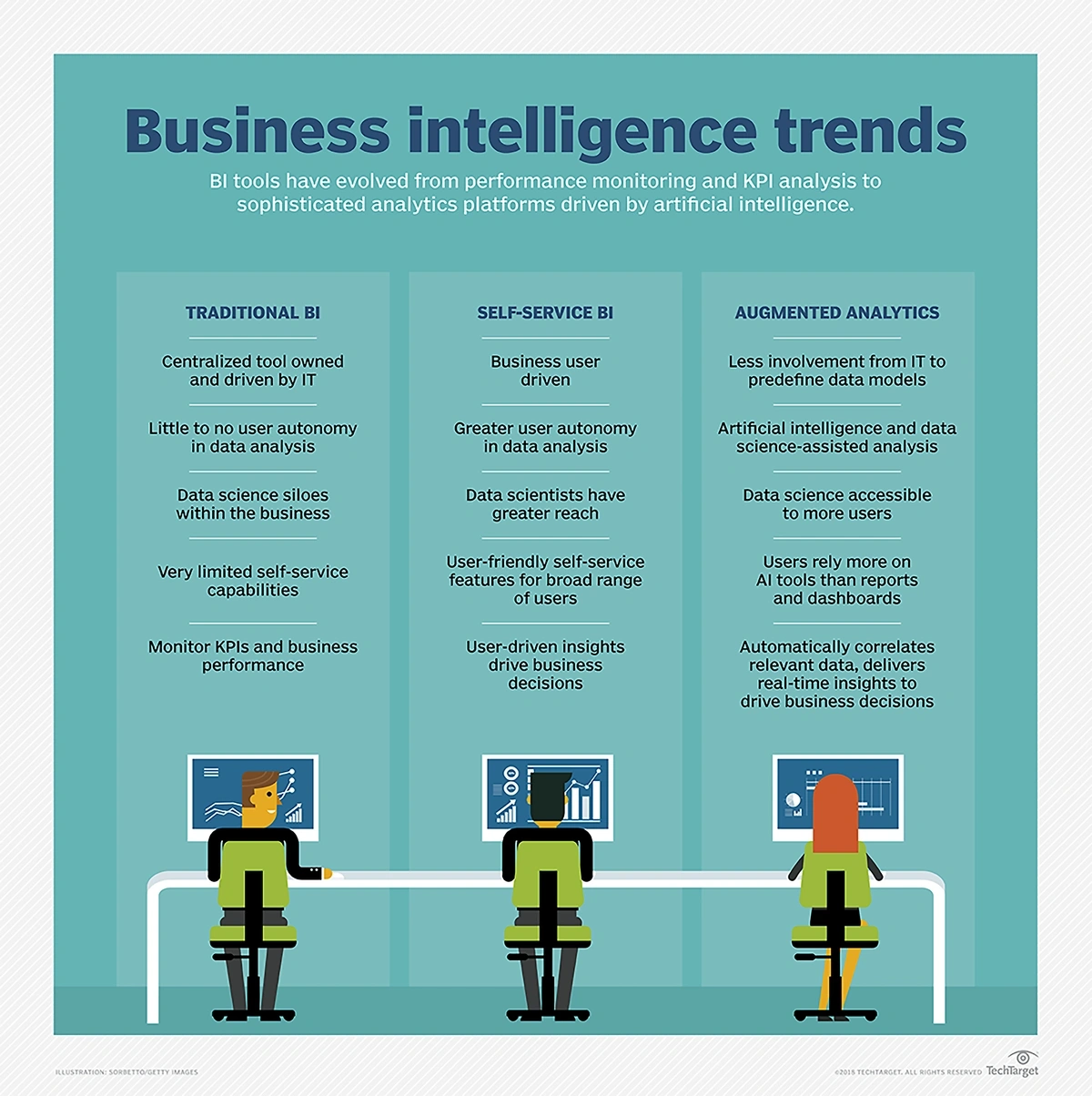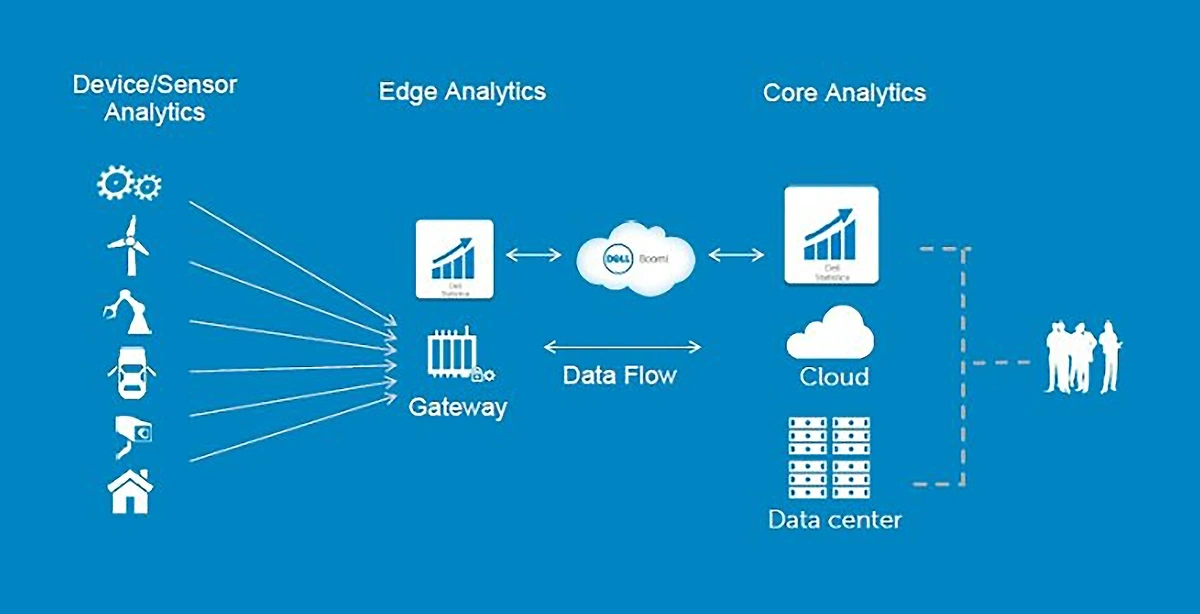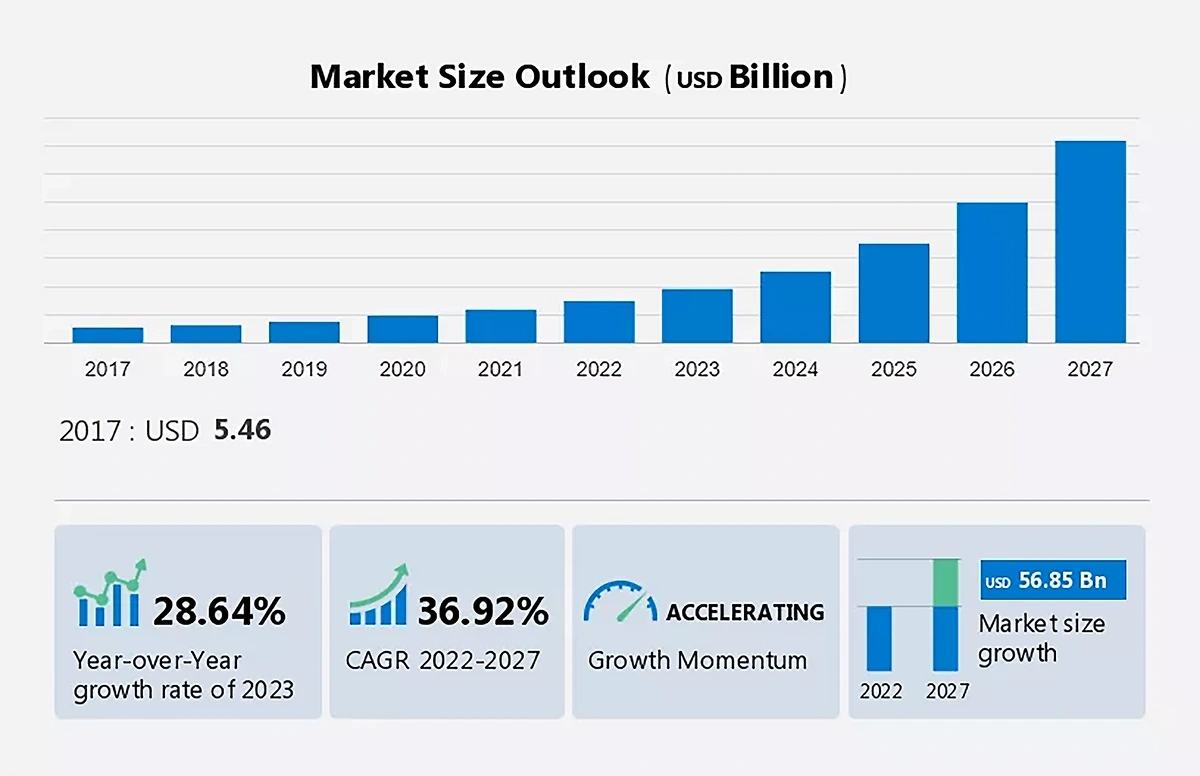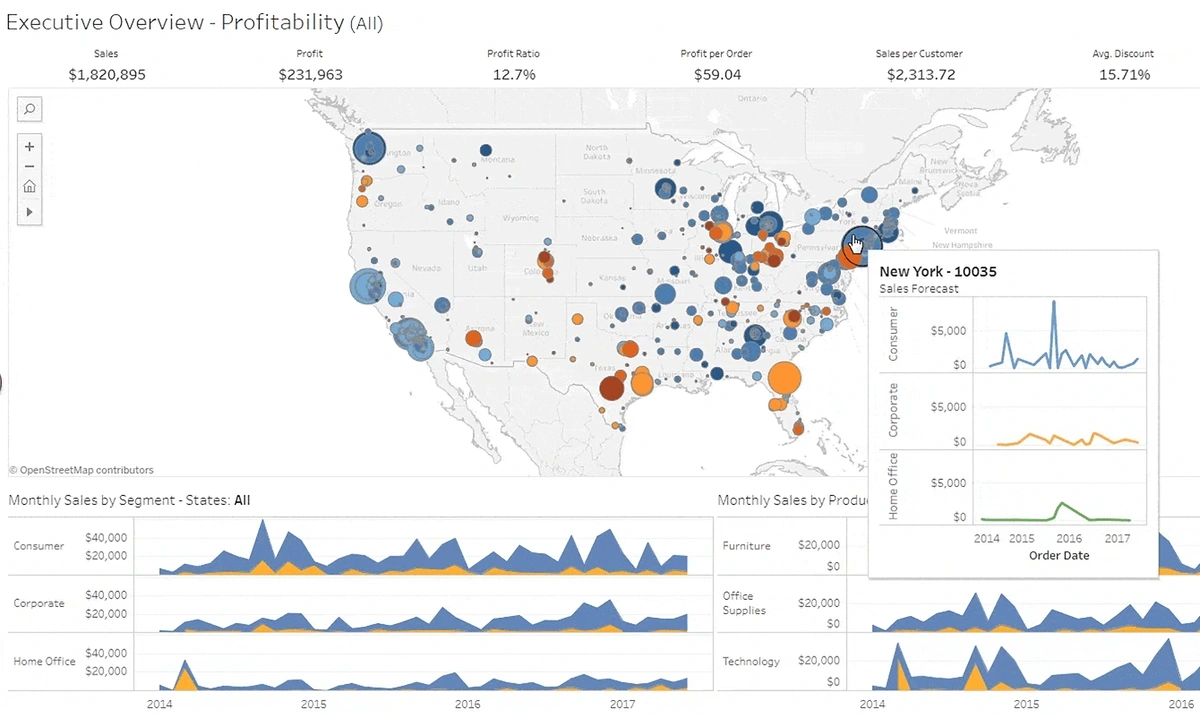Top 10 Data Analytics Trends in 2025

As we step into 2024, the data analytics landscape continues to evolve at a rapid pace. With the increasing volume of data generated globally, organizations are leveraging advanced analytics to gain insights, make informed decisions, and drive business growth. This article explores the top data analytics trends of 2024, shedding light on the cutting-edge technologies and methodologies that are shaping the future of analytics.
1. The Rise of Augmented Analytics
Augmented analytics is poised to take center stage in 2024. This trend leverages artificial intelligence (AI) and machine learning (ML) to automate data preparation, insight discovery, and even decision-making processes. By embedding AI into analytics platforms, augmented analytics empowers non-technical users to interact with data more intuitively and derive actionable insights without relying on data scientists.
The real power of augmented analytics lies in its ability to democratize data across an organization. As more businesses adopt these tools, employees at all levels can make data-driven decisions, reducing bottlenecks and increasing agility. The automation of complex tasks like data preparation and cleansing also frees up valuable time for data professionals, allowing them to focus on more strategic initiatives.

2. Implementing AI in Data Analytics
Artificial Intelligence (AI) has been a transformative force across various industries, and its impact on data analytics is profound. In 2024, AI continues to enhance data analytics by automating complex processes, improving accuracy, and providing deeper insights.

a. AI-Powered Data Processing
AI algorithms can process vast amounts of data at unprecedented speeds, enabling organizations to analyze complex datasets more efficiently. Machine learning models, a subset of AI, can identify patterns and trends that may not be apparent to human analysts, leading to more accurate predictions and actionable insights.
b. Natural Language Processing (NLP) in Analytics
NLP, a branch of AI, allows computers to understand, interpret, and respond to human language. In data analytics, NLP facilitates the analysis of unstructured data, such as text from social media, customer reviews, and other textual sources. By applying NLP, organizations can extract valuable insights from large volumes of unstructured data, improving their ability to respond to customer needs and market trends.
c. AI-Driven Predictive Analytics
Predictive analytics, powered by AI, has become increasingly sophisticated. In 2024, organizations are leveraging AI to predict future outcomes based on historical data. This capability is particularly valuable in industries like finance, healthcare, and retail, where accurate predictions can lead to better decision-making and competitive advantages.
3. Data Fabric as a Key Architecture
Data fabric is emerging as a critical architectural approach to managing the increasing complexity of data environments. In 2024, organizations will continue to struggle with the challenges of integrating and managing data across various sources, locations, and formats. Data fabric offers a solution by creating a unified layer that connects disparate data sources, whether on-premises, in the cloud, or at the edge.
This trend is particularly significant for organizations with hybrid or multi-cloud environments, as it simplifies data management and enhances data accessibility. By providing a consistent framework for data integration, governance, and security, data fabric enables organizations to unlock the full potential of their data assets and drive better business outcomes.
4. The Expansion of Edge Analytics
Edge analytics is gaining momentum as organizations seek to process and analyze data closer to its source. In 2024, the proliferation of IoT devices and the need for real-time insights are driving the adoption of edge analytics across various industries. By performing analytics at the edge, businesses can reduce latency, enhance decision-making speed, and optimize bandwidth usage.
Industries such as manufacturing, healthcare, and retail are increasingly relying on edge analytics to improve operational efficiency, monitor equipment performance, and deliver personalized customer experiences. As edge computing technology continues to advance, we can expect more sophisticated analytics capabilities to emerge, further blurring the line between edge and cloud-based analytics.

5. More Use Cases for Edge Computing
Edge computing has gained significant traction in recent years, and in 2024, its adoption is expected to expand further. Edge computing involves processing data closer to the source, rather than relying on centralized cloud servers. This approach offers several advantages, particularly in data analytics.

a. Real-Time Data Processing
One of the primary benefits of edge computing is its ability to process data in real-time. By analyzing data at the edge, organizations can reduce latency and improve the speed of decision-making. This capability is particularly valuable in industries such as manufacturing, where real-time data analytics can help optimize production processes and reduce downtime.
b. Enhanced Security and Privacy
Edge computing can also enhance data security and privacy. By keeping sensitive data closer to its source, organizations can reduce the risk of data breaches and comply with data protection regulations more effectively. This trend is especially relevant in industries such as healthcare and finance, where data security is paramount.
c. Expanding Use Cases
In 2024, edge computing is finding new use cases across various industries. For example, in the automotive sector, edge computing is being used to process data from sensors in autonomous vehicles, enabling real-time decision-making. In retail, edge computing is being leveraged to analyze customer behavior in physical stores, providing insights that can enhance the shopping experience.
6. The Growing Importance of Data Governance
As data becomes more critical to business success, the need for robust data governance is more pressing than ever. In 2024, organizations will place a greater emphasis on establishing comprehensive data governance frameworks to ensure data quality, security, and compliance. The rise of stricter data privacy regulations, such as GDPR and CCPA, underscores the importance of managing data responsibly.

Effective data governance involves setting policies and procedures for data management, defining roles and responsibilities, and implementing technologies to enforce these policies. With the growing complexity of data environments and the increasing volume of data, organizations must prioritize data governance to mitigate risks and maintain trust with customers and stakeholders.
7. AI-Driven Predictive Analytics
Predictive analytics has long been a valuable tool for forecasting future trends and behaviors, but in 2024, we will see AI take predictive analytics to new heights. AI-driven predictive analytics combines traditional statistical methods with advanced machine learning algorithms to generate more accurate and actionable predictions.
This trend is particularly impactful in industries like finance, healthcare, and retail, where organizations can use predictive analytics to anticipate customer needs, optimize supply chains, and detect potential risks. By integrating AI into predictive models, businesses can enhance the precision of their forecasts and make more informed decisions that drive growth and profitability.
8. The Rise of Explainable AI (XAI)
As AI and machine learning become more integral to data analytics, the need for transparency and interpretability in AI models has grown. Explainable AI (XAI) addresses this need by providing insights into how AI models make decisions, making it easier for organizations to understand, trust, and validate their AI-driven insights.
In 2024, XAI will become increasingly important as businesses seek to avoid the “black box” problem associated with complex AI models. By adopting XAI, organizations can ensure that their AI-driven analytics are not only accurate but also ethically sound and aligned with regulatory requirements. This trend will also help bridge the gap between data scientists and business stakeholders, fostering greater collaboration and trust.
9. Data Democratization Through Self-Service Analytics

Self-service analytics is a growing trend that empowers non-technical users to access, analyze, and visualize data without relying on IT or data science teams. In 2024, we can expect to see more organizations adopting self-service analytics platforms that offer user-friendly interfaces and drag-and-drop functionality.
This trend is driven by the increasing demand for data-driven decision-making across all levels of an organization. By enabling employees to explore data independently, businesses can accelerate the decision-making process and foster a culture of data literacy. Additionally, self-service analytics reduces the burden on data teams, allowing them to focus on more complex and strategic tasks.
10. Increasing Reliance on Data-as-a-Service (DaaS)
Data-as-a-Service (DaaS) is becoming a cornerstone of data management strategies in 2024. DaaS allows organizations to access and utilize data on-demand without the need to manage the underlying infrastructure. This trend is driven by the growing need for agility and scalability in data analytics.

a. On-Demand Data Access
DaaS provides organizations with the flexibility to access data as needed, without the constraints of managing large data warehouses. This approach is particularly beneficial for organizations that need to analyze data from multiple sources or across different geographical locations. By leveraging DaaS, businesses can reduce costs and improve efficiency in their data analytics processes.
b. Scalability and Flexibility
One of the key advantages of DaaS is its scalability. Organizations can easily scale their data analytics capabilities up or down based on demand. This flexibility is crucial in industries where data volumes can fluctuate significantly, such as e-commerce or financial services. DaaS providers offer solutions that can handle large-scale data processing and storage, allowing organizations to focus on deriving insights from the data rather than managing the infrastructure.

c. Integration with AI and Machine Learning
DaaS platforms are increasingly incorporating AI and machine learning capabilities, enabling organizations to perform advanced analytics without the need for in-house expertise. These integrations allow businesses to gain deeper insights from their data and make more informed decisions. For example, AI-powered DaaS platforms can automatically identify trends and patterns in data, providing valuable insights that can drive business strategy.
11. The Integration of DataOps and DevOps
DataOps, a practice that emphasizes collaboration, automation, and continuous delivery in data management, is converging with DevOps to create more efficient and agile analytics workflows. In 2024, we will see more organizations integrating DataOps with DevOps to streamline data pipelines, improve data quality, and accelerate the deployment of analytics solutions.
This integration is particularly valuable in environments where data and application development are closely intertwined, such as in AI and machine learning projects. By adopting a unified approach, organizations can reduce the time it takes to move from data ingestion to actionable insights, enhancing their ability to respond to changing business needs.
12. Sustainability and Green Data Analytics
As global concerns about climate change and environmental impact continue to rise, organizations are increasingly focusing on sustainability. In 2024, green data analytics will emerge as a key trend, with businesses using data analytics to measure, monitor, and reduce their environmental footprint.
Sustainability initiatives often generate vast amounts of data, from energy consumption and waste management to supply chain emissions. By leveraging data analytics, organizations can gain insights into their environmental impact and identify opportunities for improvement. This trend not only supports corporate social responsibility but also helps businesses comply with evolving environmental regulations and meet the growing demand for sustainable practices.
13. The Continued Growth of Cloud-Native Analytics
Cloud-native analytics is expected to continue its rapid growth in 2024, driven by the increasing adoption of cloud computing and the need for scalable, flexible analytics solutions. Cloud-native analytics platforms are designed to leverage the full power of the cloud, offering benefits such as elasticity, cost efficiency, and easy integration with other cloud services.
In 2024, more organizations will migrate their analytics workloads to the cloud, taking advantage of the scalability and agility that cloud-native platforms provide. This trend is particularly significant for businesses with large and complex data environments, as cloud-native analytics enables them to process and analyze data at scale, without the limitations of traditional on-premises infrastructure.
14. Using Business Intelligence to Gather Insights
Business Intelligence (BI) tools have evolved significantly over the years, and in 2024, they continue to be essential for organizations looking to make data-driven decisions. BI enables businesses to gather, process, and visualize data to uncover actionable insights.

Read more: Top 10 Business Intelligence (BI) and Analytics Trends for 2025
a. Self-Service BI
One of the key trends in 2024 is the rise of self-service BI tools. These tools empower non-technical users to access and analyze data without the need for extensive IT support. By providing user-friendly interfaces and intuitive data visualization capabilities, self-service BI tools enable employees across an organization to make informed decisions based on real-time data.
b. Integration with AI and Machine Learning
BI tools are increasingly integrating AI and machine learning capabilities to enhance data analysis. These integrations enable organizations to identify patterns, trends, and anomalies in their data more effectively. For example, AI can automatically detect correlations between different data points, providing deeper insights that might otherwise go unnoticed.
c. Real-Time Analytics
In 2024, the demand for real-time analytics continues to grow. Organizations are leveraging BI tools that provide real-time data visualization and reporting, allowing them to respond to changing conditions quickly. This capability is particularly valuable in industries such as e-commerce, where customer behavior can change rapidly, and timely insights are crucial for staying competitive.
15. Implementing a Data Mesh Architecture

Data Mesh is an emerging architectural approach that is gaining traction in 2024. Unlike traditional centralized data architectures, Data Mesh advocates for a decentralized approach to data management, where data is treated as a product and managed by cross-functional teams.
a. Decentralized Data Management
Data Mesh allows organizations to move away from monolithic data architectures and adopt a more decentralized approach. In a Data Mesh architecture, data is owned and managed by the teams that generate and use it. This approach reduces bottlenecks associated with centralized data management and allows for more agile and scalable data analytics.
b. Domain-Oriented Data Ownership
One of the core principles of Data Mesh is domain-oriented data ownership. This means that data is organized and managed by domain-specific teams, who are responsible for ensuring its quality, accessibility, and security. This approach empowers teams to take ownership of their data and ensures that data is managed in a way that aligns with the needs of the business.
c. Improved Data Discoverability and Accessibility
Data Mesh also emphasizes the importance of making data easily discoverable and accessible across the organization. By implementing standardized data interfaces and APIs, organizations can ensure that data is easily accessible to those who need it, regardless of where it is stored. This approach facilitates collaboration and enables teams to leverage data more effectively in their decision-making processes.

16. Using Synthetic Data to Deliver High-Quality Data While Ensuring Privacy
Synthetic data is increasingly being used in 2024 as a solution to the challenges of data privacy and data quality. Synthetic data is artificially generated data that mimics real-world data but does not contain any personally identifiable information (PII). This trend is particularly relevant in industries where data privacy is a major concern.
a. Enhancing Data Privacy
One of the primary benefits of synthetic data is its ability to enhance data privacy. By using synthetic data in place of real-world data, organizations can perform data analytics without risking the exposure of sensitive information. This approach is particularly valuable in industries such as healthcare and finance, where data privacy regulations are stringent.
b. Improving Data Quality
Synthetic data can also be used to improve data quality. By generating synthetic data that is representative of real-world scenarios, organizations can fill gaps in their datasets and ensure that their analytics models are trained on high-quality data. This approach can lead to more accurate and reliable insights.
c. Facilitating AI and Machine Learning
Synthetic data is also playing a key role in the development and training of AI and machine learning models. In situations where real-world data is scarce or difficult to obtain, synthetic data can be used to train models, ensuring that they are robust and capable of handling a wide range of scenarios. This trend is driving innovation in AI and machine learning and enabling organizations to develop more sophisticated analytics capabilities.
Conclusion
The data analytics landscape in 2024 is marked by significant advancements in technology and methodology. From augmented analytics and AI-driven insights to data ethics and governance, organizations are embracing these trends to stay competitive and drive business growth. As data continues to play a central role in decision-making, staying ahead of these trends will be crucial for organizations seeking to unlock the full potential of their data assets.
